How to Clean the Air in Home During Self Quarantine
The United States is in its first week of widespread school and public environment closures that has left many Americans and their families stuck inside the confined space of their home for the next projected couple weeks. The rapid spreading of the pandemic virus called the Coronavirus COVID-19 has led to these drastic decisions from the national government to have Americans conduct a 14-day voluntary quarantine to try to slow the spread of this fast spreading virus. The families that are under lock down in their home’s participating in this quarantine have started to become concerned about not only the health of their family members but also the indoor air quality in this space.
Recently, indoor air quality has been at the forefront of many people’s mind as national agencies like the Environmental Protection Agency (EPA) have published findings about the harsh reality of indoor air pollution inside of homes and other indoor spaces, such as that indoor air pollution levels are two to five times more polluted than that of outdoor air. There can be a multitude of sources housed within these indoor spaces that can lead to the accumulation of these airborne pollutants in the air space of a home – many of these sources may come as a surprise to homeowners.
In this article we are going to learn more about how to clean the air in a home during this in-home quarantine period and discuss the best solutions to use to clean the air in this space quickly, safely, and effectively.
What is Indoor Air Pollution
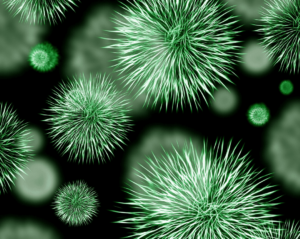 Typically, when we think of air pollution, we tend to think of outdoor air that has been flooded with various contaminants such as car exhausts and other gases that can become flooded in the air space. However, as we discussed previously, although many people think of air pollution as a strictly outdoor space problem, this is far from the case, as many homes and other indoor spaces can be even more polluted than these outdoor environments. There can be various sources located through indoor environments such as mold, pollen, tobacco smoke, household products, pesticides, gases, and even products such as building materials that can release toxic chemicals into the air of this space which will lead to elevated pollution levels. Depending on the pollutants in the air of your home and the level in which they are present in the air space will directly influence how poor your home’s air quality may be and the direct effects the occupants in this space may experience.
Typically, when we think of air pollution, we tend to think of outdoor air that has been flooded with various contaminants such as car exhausts and other gases that can become flooded in the air space. However, as we discussed previously, although many people think of air pollution as a strictly outdoor space problem, this is far from the case, as many homes and other indoor spaces can be even more polluted than these outdoor environments. There can be various sources located through indoor environments such as mold, pollen, tobacco smoke, household products, pesticides, gases, and even products such as building materials that can release toxic chemicals into the air of this space which will lead to elevated pollution levels. Depending on the pollutants in the air of your home and the level in which they are present in the air space will directly influence how poor your home’s air quality may be and the direct effects the occupants in this space may experience.
When it comes to frequent exposure inside of your home, especially what many Americans are experiencing now as they self-quarantine themselves in their homes with their spouses, kids, and other family members, the health risks associated with potentially elevated levels of indoor air pollution in this space may be significant, especially for those with compromised health such as children, the elderly, and those with immune-compromised conditions. Ultimately, understanding the various sources of pollution inside your home and having the proper air quality solutions in place can help to remediate and restore the indoor air quality in a home or other personal indoor environment.
Where Does Air Pollution Come From
Air pollution is a factor that is not often considered when it comes to the human health, as these airborne pollutants can be hard to conceptualize and therefore it is disregarded and not thought about, however, it is becoming more important to be vigilant when it comes to your air quality in both indoor and outdoor environments. When it comes to where air pollution comes from, these airborne contaminants can be caused by both solid or liquid particles and even certain gases that are suspended into the air that will easily float throughout the air spaces of various environments. These particles and gases will come from cars, exhausts, factories, dust, pollen, mold, building materials, chemical cleaning agents, natural disasters (wildfires, volcanoes, etc.), and other various sources within the different environments.
When the solid or liquid particles of pollution release into the air this will be what is known as aerosols. Aerosols are chemical vapors that are most notorious for disrupting the health of those individuals that become exposed to the aerosols in their air space. In addition, other vapor air pollution that may become a concern in indoor environments is that of VOCs (volatile organic compounds) that can be released from a number of household products and building materials and that will significantly contribute to poor indoor air quality.
Sources of Indoor Air Pollution
The threat behind indoor air pollution is real and when you have dangerously heightened levels of pollution within this indoor space, the health of the occupants can become compromised. It has been found that more than 90 percent of Americans spend their time indoors, and now with most of Americans stuck quarantined inside their home this research has become even more true. Generally, when it comes to the various sources of indoor air pollution inside of a home the main contaminants of this space will include biological agents, building materials, tobacco smoke, wood stoves and heating devices, and chemical products used in this indoor environment. Below we are going to discuss how these various indoor air pollutants effect an indoor air space and the health of those occupants exposed to these pollutants in their environment.
 Tobacco Smoke: Tobacco smoke is a typically a mixture of smoke that come from the burning end of certain tobacco products such as cigarettes, pipes, or cigars. The complex mixture of tobacco smoke can contain over 4000 compounds, with more than 40 of these compounds known to be carcinogenic and may cause cancer in humans and/or animals. When this smoke is produced and released into the air, it can lead to certain health effects in individuals such as asthma, allergy, respiratory and even more serious conditions like pneumonia, bronchitis, etc.
Tobacco Smoke: Tobacco smoke is a typically a mixture of smoke that come from the burning end of certain tobacco products such as cigarettes, pipes, or cigars. The complex mixture of tobacco smoke can contain over 4000 compounds, with more than 40 of these compounds known to be carcinogenic and may cause cancer in humans and/or animals. When this smoke is produced and released into the air, it can lead to certain health effects in individuals such as asthma, allergy, respiratory and even more serious conditions like pneumonia, bronchitis, etc.- Wood Stoves and Heating Devices: Whether it be fireplaces, gas stoves, woodstoves, or even gas heaters, there can be pollutants that are released from these indoor sources, such as carbon monoxide, nitrogen dioxide, radon, and particulates. According to the Agency for Toxic Substances & Disease Research (ATSDR), studies have shown that children living in homes heated with wood stoves have a significant increase in respiratory symptoms compared with children living in homes without wood stoves.
- Building Materials: Building materials, home improvement products, and other construction materials used inside of a home can potentially pose health risks to occupants and will directly impact the air quality in this indoor space. VOCs (like formaldehyde) can be one of the main components used in building materials such as adhesives and wood products. In addition, particleboard, hardwood paneling, and medium density fiberboard may also be building material parts that can be a source of pollution in a home.
- Biological Agents: Biological agents such as animal dander, saliva, urine, bacteria, house dust, mildew, mold, pollen, and viruses may also be a major source of indoor air pollution inside of a home. These biological pollutants can come from occupants, plants, and animals in the space and can be one of the major contributors to health issues to people in these indoor spaces. As we are currently dealing with today with the pandemic coronavirus COVID-19 virus, airborne pathogens in the air are a big fear and health risks that can compromise an environment, thus it is important to remain vigilant and proactive to fight against these biological agents in your home’s air.
Bad Air Quality Symptoms
The correlation between some of the most common indoor air pollutants present in a home or other indoor space and health effects is very well established and documented. The specific health effects and the severity of the health effects will depend on various factors such as the pollutant level in the indoor air, the type of pollutants present, and the health standing of those occupants that are exposed to this indoor pollution. The bad air quality symptoms that can be provoked from indoor air pollution can include the following symptoms, according to the Canadian Centre for Occupational Health and Safety (CCOHS);
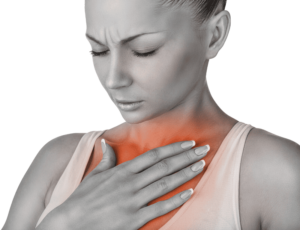 Dryness and irritation of the eyes, nose, throat, and skin
Dryness and irritation of the eyes, nose, throat, and skin- Headache
- Fatigue
- Shortness of breath
- Hypersensitivity and allergies
- Sinus congestion
- Coughing and sneezing
- Dizziness
- Nausea
- And potentially respiratory diseases, heart disease, and cancer
When it comes to the present of these symptoms and when they will take place in a person’s body, it will generally occur within several hours of exposure and these symptoms can progress the longer you are exposed to these elevated pollutant levels.
How to Test Air Quality at Home
According to the World Health Organization (WHO), there is an averaged 9 out of 10 people that are breathing air that are polluted, especially high levels of pollutants. Whether this be in the outdoor environments or in indoor environments, airborne pollution can be nearly everywhere – and sometimes your home or personal indoor space may contain the highest level of pollutants than other environments individuals are exposed to throughout the day. If you have started to experience health symptoms only within your home, than this may be a sign that your home has unhealthy levels of pollutants within this space, and these pollutants may be caused by poor airflow and ventilation, the installation of new building materials, or simply everyday products that you use inside of your home. When it comes to testing the air quality of your most sacred indoor space [your home], the best tool to have to measure the air quality is a home air quality meter.
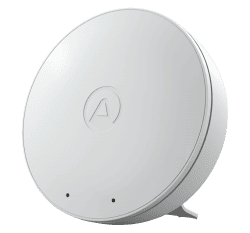 The Airthings Wave Mini is an at-home air quality meter that is small in size but big in impact. This resourceful indoor air quality companion contacts three sensors and a low cost that allows for total coverage, as the wave provides you an instant indication of your home’s air quality levels. The Wave Mini will sense airborne chemicals and odors (TVOCs), temperature, and humidity. This battery-operated air quality meter can be placed throughout all areas of your home and will provide you with results straight to your smartphone, allowing you to analyze and assess your indoor air quality and pollutant levels.
The Airthings Wave Mini is an at-home air quality meter that is small in size but big in impact. This resourceful indoor air quality companion contacts three sensors and a low cost that allows for total coverage, as the wave provides you an instant indication of your home’s air quality levels. The Wave Mini will sense airborne chemicals and odors (TVOCs), temperature, and humidity. This battery-operated air quality meter can be placed throughout all areas of your home and will provide you with results straight to your smartphone, allowing you to analyze and assess your indoor air quality and pollutant levels.
Best Air Cleaner for Home
When it comes to improving the indoor air of your home the top methods are to remove the pollutant sources and to help ventilate the environment by bringing in clean outdoor air. The process of removing airborne pollutants from within an indoor space is easily accomplished through the use of portable air purifiers. An air purifier is an air quality device that works to remove and filter out pollutants from within the air space of an indoor environment. There are a variety of different types of air purifiers that can be used in personal indoor spaces like a home, many of which will use specific technologies that will work mitigate and remove certain airborne pollutants from the air.
The air quality inside of your home is important, and today it is especially important as many Americans undergo self-quarantine inside their home – with adults working from home and kids stuck doing online work within the confines of their homes. The occupants that reside inside of a home can face different obstacles when it comes to exposure to airborne pollutants, especially those with compromised immune systems and health, along with children who have a higher susceptibility to adverse health reactions when exposed to certain pollutants in the air. Therefore, the use and integration of an air cleaner or air purifier is important when it comes to providing clean air inside of your home.
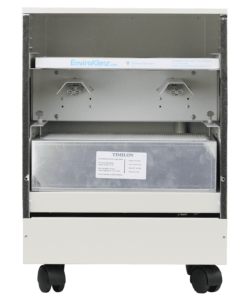 Ultimately, the decision of selecting an air purifier for your home will depend greatly on the types of airborne pollutants that the specific air purifier technology uses within its filtration system. When picking an air purifier, the EnviroKlenz UV Air Purifier can be a triple-threat air purification device that is capable of removing and mitigating noxious and toxic chemicals and odors, particulate matter, and the destruction of microorganisms in the air. The EnviroKlenz UV Air Purifier contains a two-stage filtration process that uses the proprietary EnviroKlenz technology within the EnviroKlenz Air Cartridge that works to neutralize noxious and toxic chemicals and odors from the air; and the second stage filtration of the EnviroKlenz UV Air Purifier is a hospital-grade HEPA filter that is able to filter out fine particulate matter larger than 0.3 microns in size at a 99.99 percent efficiency. In addition to these two-stages of filtration in the EnviroKlenz UV Air Purifier, there are also two UVC lights that are placed directly in-between these two filters that allow for the lights to shine directly on the collection site of the HEPA filter – which collects and traps microorganisms within the filter media of this HEPA. UVC lights are germicidal radiation that will shine on these airborne microorganisms providing direct exposure to these pollutants that will allow for an effective destruction of these viruses, bacteria, and mold spores in the environment.
Ultimately, the decision of selecting an air purifier for your home will depend greatly on the types of airborne pollutants that the specific air purifier technology uses within its filtration system. When picking an air purifier, the EnviroKlenz UV Air Purifier can be a triple-threat air purification device that is capable of removing and mitigating noxious and toxic chemicals and odors, particulate matter, and the destruction of microorganisms in the air. The EnviroKlenz UV Air Purifier contains a two-stage filtration process that uses the proprietary EnviroKlenz technology within the EnviroKlenz Air Cartridge that works to neutralize noxious and toxic chemicals and odors from the air; and the second stage filtration of the EnviroKlenz UV Air Purifier is a hospital-grade HEPA filter that is able to filter out fine particulate matter larger than 0.3 microns in size at a 99.99 percent efficiency. In addition to these two-stages of filtration in the EnviroKlenz UV Air Purifier, there are also two UVC lights that are placed directly in-between these two filters that allow for the lights to shine directly on the collection site of the HEPA filter – which collects and traps microorganisms within the filter media of this HEPA. UVC lights are germicidal radiation that will shine on these airborne microorganisms providing direct exposure to these pollutants that will allow for an effective destruction of these viruses, bacteria, and mold spores in the environment.
Article Source:
- United States Environmental Protection Agency (EPA): Indoor Air Quality (link)
- Agency for Toxic Substances & Disease Registry (ATSDR): Taking an Exposure History What are Possible Sources of Indoor Air Pollution? (link)
- Canadian Centre for Occupational Health & Safety (CCOHS): Indoor Air Quality – General (link)
- World Health Organization (WHO): Air Pollution (link)
UV Mobile Air System

✓ Patented earth mineral technology works to attack VOCs and break them down on a compound level
✓ No chemicals or masking agents
✓ Will not release any chemicals back into your environment
✓ UVC lamps are continuously shining on the collected organisms with high effeciency of kill and destruction
Comments
Post a Comment